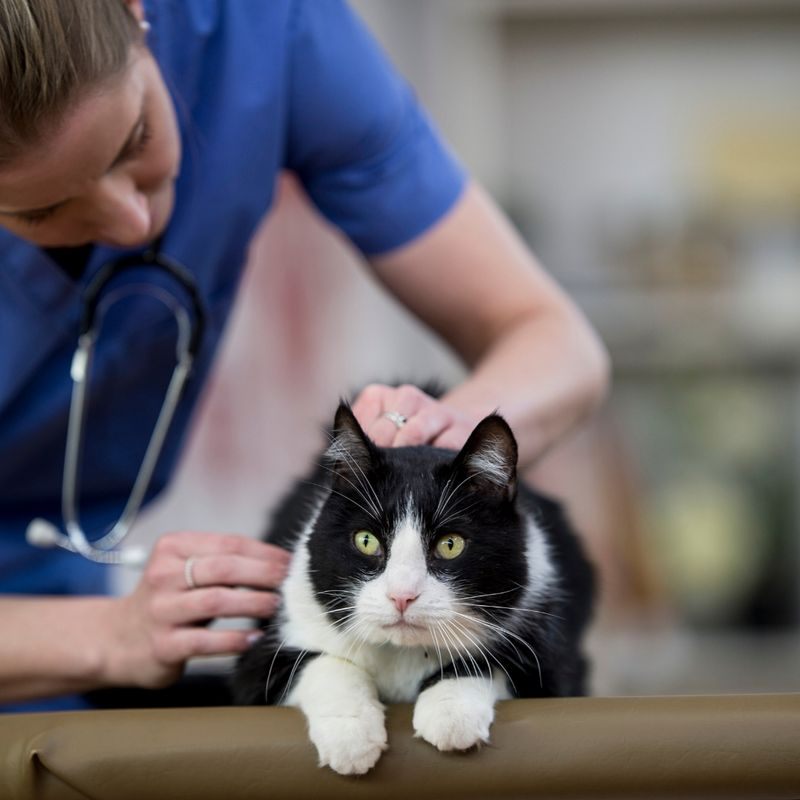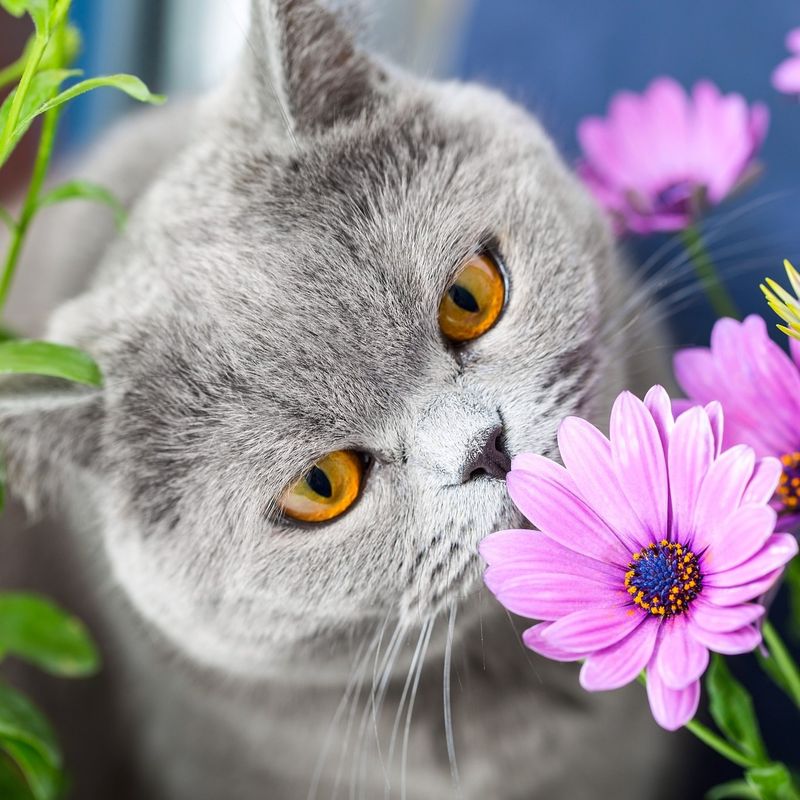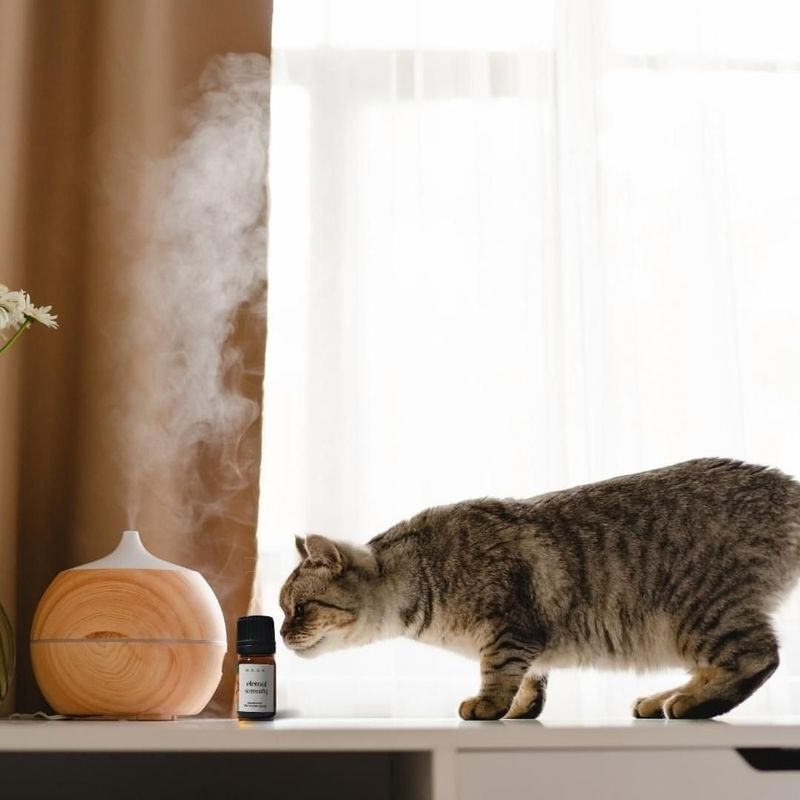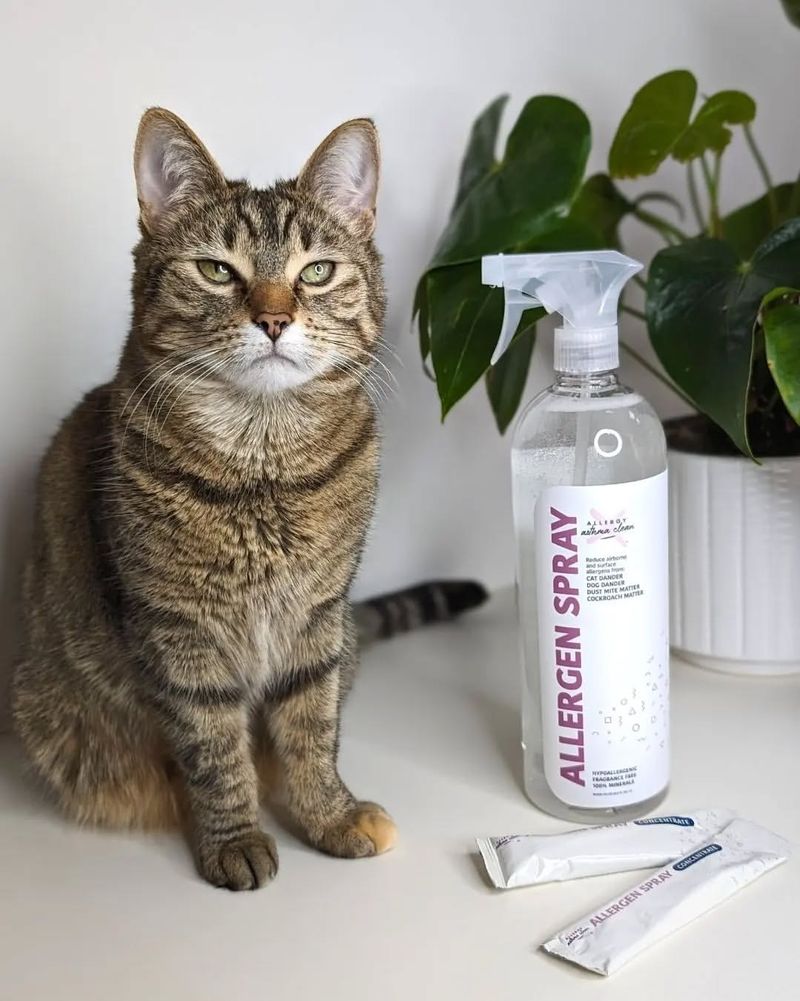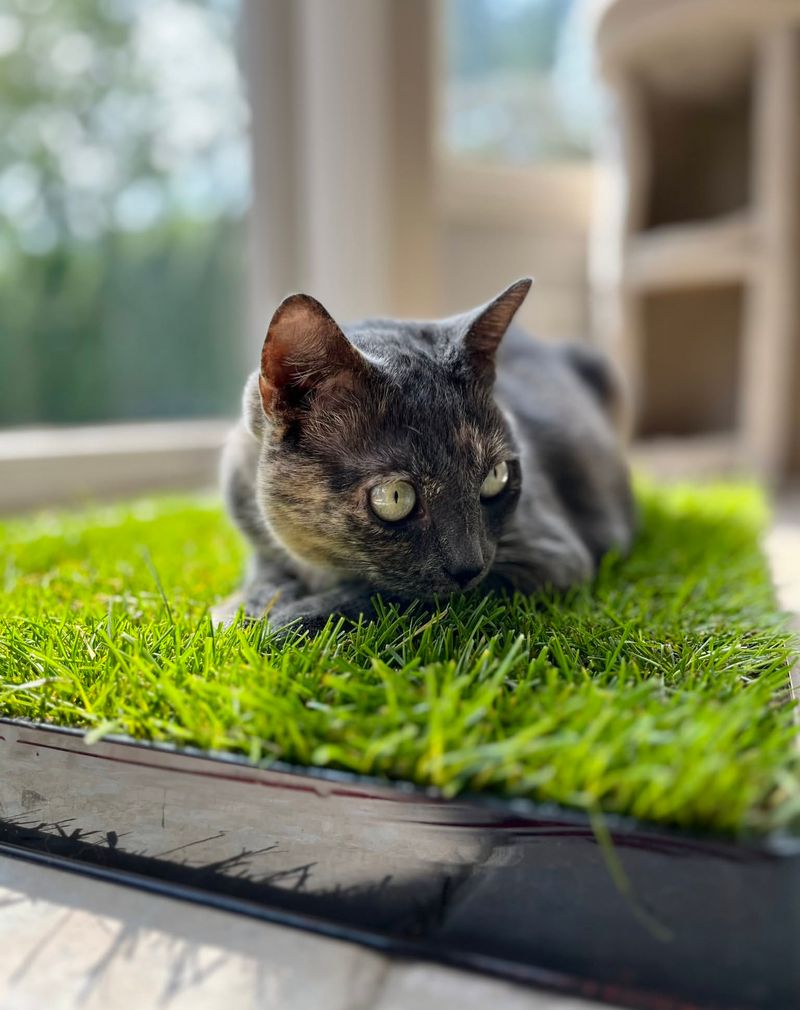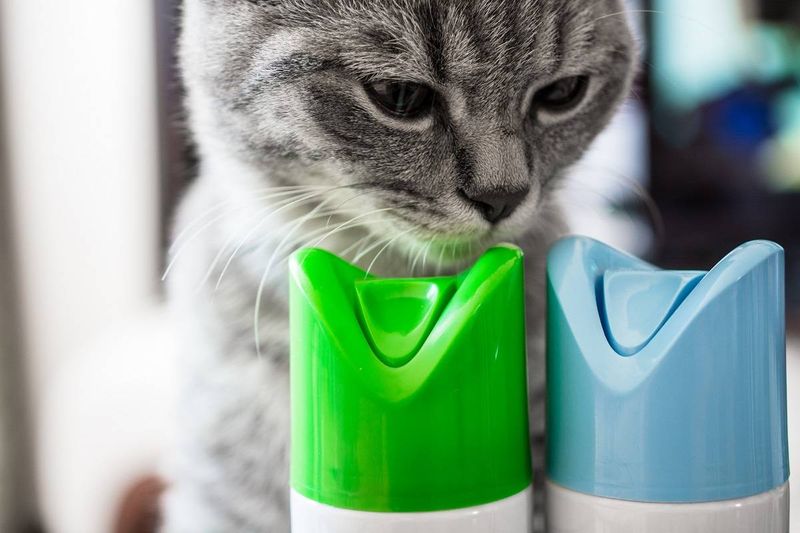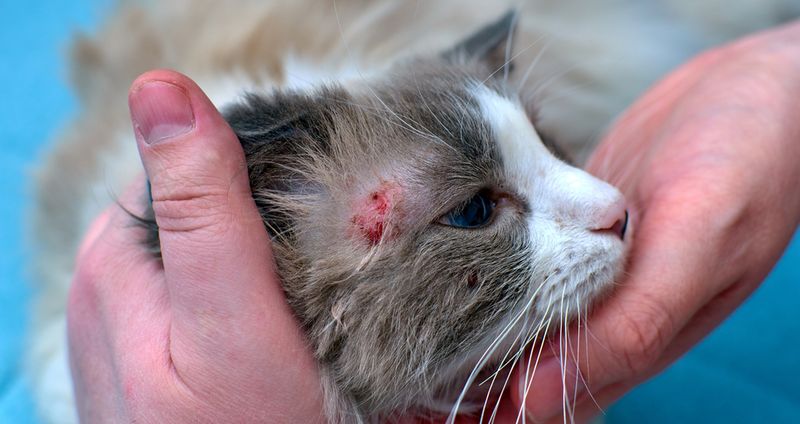📖 Table of Content:
- 1. Flea Allergy Dermatitis
- 2. Food Allergies
- 3. Pollen Allergies
- 4. Dust Mite Allergies
- 5. Mold Allergies
- 6. Perfume and Cleaning Product Allergies
- 7. Tobacco Smoke Allergies
- 8. Fabric and Textile Allergies
- 9. Grass Allergies
- 10. Plastic and Rubber Allergies
- 11. Household Chemical Allergies
- 12. Insect Bite Allergies
- 13. Environmental Allergies
Is your cat constantly scratching, sneezing, or just not acting like their usual self? Allergies in cats are more common than you might think, and just like us humans, our feline friends can react to a surprising variety of allergens.
From environmental triggers like pollen to certain foods or even household items, cats can develop sensitivities that leave them feeling miserable—and leave you wondering what’s wrong.
But don’t worry; we’re here to help you recognize the telltale signs and what you can do to help your furry companion feel better. Whether you’re a seasoned cat parent or a first-time kitty owner, understanding these allergies is a key step in ensuring your pet’s comfort and happiness.
1. Flea Allergy Dermatitis
When a cat is allergic to flea saliva, even a single bite can cause severe itching, redness, and discomfort. This reaction may lead to hair loss and skin infections.
Managing this allergy begins with effective flea control. Regularly treating your cat with vet-recommended flea medications can prevent outbreaks. It’s essential to also treat your home environment to eliminate fleas completely.
For cats suffering from intense symptoms, a vet may prescribe antihistamines or corticosteroids to alleviate the allergic reaction. Regular grooming and monitoring for fleas can significantly reduce the chances of future reactions, providing your cat with much-needed relief.
2. Food Allergies
Food allergies in cats can manifest as skin problems, digestive issues, or respiratory symptoms. Common culprits include proteins like beef, chicken, and dairy products. Cats can develop allergies at any age, and symptoms may be chronic or sporadic.
Identifying the specific allergen can be challenging but is critical for treatment. An elimination diet supervised by a veterinarian is often the best approach to diagnosing food allergies.
Once identified, the allergenic ingredient should be completely removed from the cat’s diet. Fortunately, many hypoallergenic cat food options are available, allowing your feline friend to enjoy meals without discomfort. Regular check-ups can ensure that the allergy is managed effectively over time.
3. Pollen Allergies
These allergies are often more noticeable during spring or summer when pollen counts are higher.
Keeping your cat indoors during peak pollen seasons can help minimize exposure. Washing their paws and fur after they’ve been outside can also reduce the amount of pollen they bring into the home.
If symptoms persist, a veterinarian might recommend antihistamines or other allergy medications. Consistent monitoring of your cat’s behavior and health during pollen seasons can help manage symptoms effectively, ensuring your cat remains comfortable and happy.
4. Dust Mite Allergies
Mites thrive in homes, particularly in bedding, carpets, and upholstered furniture, making it difficult for sensitive cats to avoid exposure.
Regular cleaning and vacuuming can help reduce dust mites in the home. Washing your cat’s bedding frequently in hot water can also minimize allergens. Consider using air purifiers to further decrease airborne allergens.
If a cat shows persistent symptoms, consulting a vet is important. They may recommend medications or allergy shots to help manage the condition. Proactive measures and veterinary guidance can greatly improve your cat’s quality of life.
5. Mold Allergies
Mold allergies in cats can cause respiratory issues, skin irritation, and other health problems. Mold can grow in damp areas of a home, such as basements, bathrooms, or kitchens, exposing cats to this allergen.
To prevent mold-related allergies, it’s crucial to control moisture levels within your home. Fixing leaks, using dehumidifiers, and regularly cleaning mold-prone areas can help keep mold at bay.
If your cat exhibits symptoms like coughing or skin irritation, consulting a veterinarian is essential. They might prescribe medications to ease symptoms and recommend strategies to reduce mold exposure. Keeping your home mold-free ensures a healthier environment for both you and your feline companion.
6. Perfume and Cleaning Product Allergies
Many cats are sensitive to perfumes and cleaning products, leading to allergic reactions like sneezing, coughing, or skin irritation. These products often contain strong chemicals that can irritate a cat’s respiratory system or skin.
Switching to hypoallergenic or unscented products can significantly reduce allergic reactions in sensitive cats. It’s also wise to keep your cat out of areas where these products are being used until the area is well-ventilated.
For cats with severe reactions, a veterinarian can offer treatments to alleviate symptoms and suggest additional precautions. Creating a cat-friendly home environment with gentle cleaning products is a simple yet effective way to ensure your cat’s comfort.
7. Tobacco Smoke Allergies
Tobacco smoke can trigger allergies in cats, causing respiratory issues like coughing, wheezing, or difficulty breathing. Cats exposed to secondhand smoke are at risk, as their small lungs are easily irritated by tobacco’s harmful chemicals.
Protecting your cat from smoke exposure is vital. Smokers should avoid smoking indoors and ensure their home is well-ventilated. Consider creating a smoke-free zone where your cat can relax without exposure.
If your cat exhibits symptoms of smoke allergies, consulting a veterinarian for advice and potential treatments is crucial. Prioritizing a smoke-free environment contributes significantly to your cat’s overall health and well-being.
8. Fabric and Textile Allergies
© animal_clinic_of_tustin_ranch
Materials like wool, polyester, or certain dyes can trigger allergic responses, such as skin irritation, itching, and sneezing.
Identifying the specific fabric causing the allergy involves observing when symptoms occur. Once identified, removing or replacing the offending material can significantly alleviate symptoms.
Using hypoallergenic fabrics or covers can also help prevent allergic reactions. Consultation with a veterinarian can provide further insights and treatments to manage fabric allergies effectively. Tailoring your home environment to suit your cat’s needs ensures a comfortable and allergy-free lifestyle.
9. Grass Allergies
Grass allergies in cats can cause symptoms like itching, sneezing, or skin inflammation. These allergies are common during the warmer months when cats spend more time outdoors.
To manage grass allergies, limit your cat’s outdoor exposure, particularly when grass pollen counts are high. Bathing your cat regularly can remove allergens from their fur.
If symptoms persist, seek veterinary advice for appropriate treatments, which may include antihistamines or topical solutions. Being proactive about your cat’s outdoor activities can help minimize allergy flare-ups, ensuring they enjoy their time outside without discomfort.
10. Plastic and Rubber Allergies
Allergies to plastic and rubber can manifest as skin reactions or gastrointestinal symptoms in cats. Food bowls, toys, and other household items might be the sources of such allergies.
Switching to stainless steel or ceramic food bowls can reduce exposure to plastic allergens. Ensuring toys are made from natural materials can also help prevent reactions.
If your cat shows signs of allergy, such as redness or swelling, consult a veterinarian for guidance. They may recommend alternative products and treatments to manage symptoms effectively. Making mindful choices about your cat’s environment can lead to a healthier, happier pet.
11. Household Chemical Allergies
Detergents, disinfectants, air fresheners, and other cleaning agents, can cause allergies in cats. Symptoms may include skin irritation, respiratory issues, or digestive problems.
To prevent allergic reactions, opt for cat-friendly cleaning products and store them away from your pet’s reach. Ensure areas where chemicals are used are well-ventilated and dry before allowing your cat to enter.
For persistent symptoms, seek veterinary assistance to identify the allergen and obtain suitable treatments. Taking proactive steps to limit your cat’s exposure to harmful chemicals is crucial for maintaining their health and comfort.
12. Insect Bite Allergies
Imagine a warm day when your curious cat sits by the window, gazing at the buzzing world outside. Suddenly, you notice them scratching incessantly. This behavior might hint at insect bite allergies, a common ailment in cats. These bites can lead to severe itching and inflamed skin, causing discomfort.
If your feline is overly grooming or you spot red patches, consider a vet visit. Sometimes, an insect’s tiny bite can lead to big problems.
Keep your home insect-free to ensure your cat’s comfort and health. Regularly check for fleas and ticks, especially during warmer months.
13. Environmental Allergies
Environmental allergies can cause sneezing, watery eyes, and skin irritation in your cat. These allergies are often triggered by dust, pollen, or other particles in the air. If your cat is showing these symptoms, environmental allergens may be the cause.
Your cat may react to pollen, mold, or even household dust. Watch for signs like repeated sneezing or rubbing their face against furniture.
Creating a clean living space can help reduce symptoms. Use air purifiers and regularly clean your cat’s bedding to minimize allergens. Understanding these triggers leads to a happier, healthier pet.

